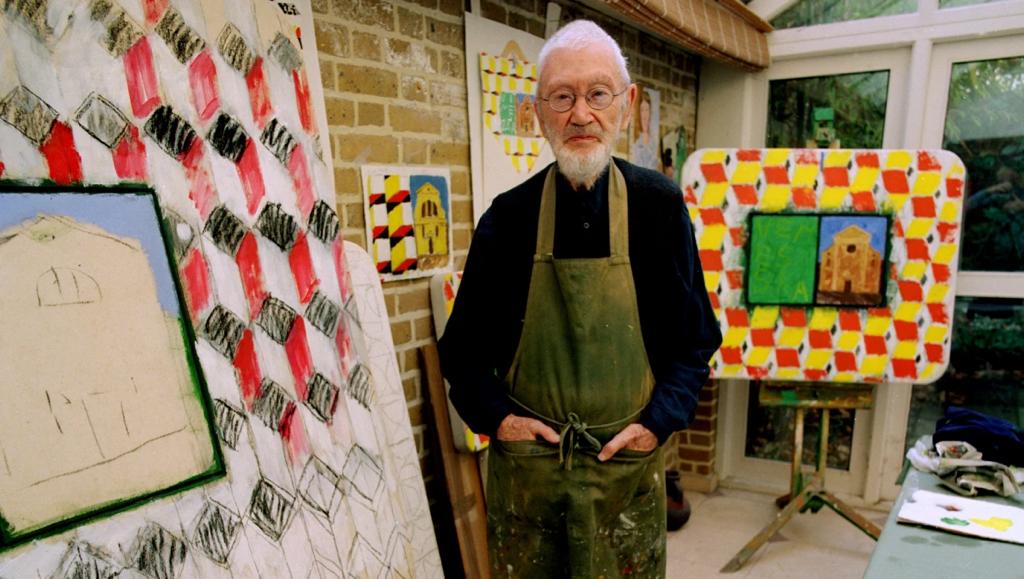Joe Tilson RA, one of the leading painters of his generation, has died aged 95. He emerged as a distinctive voice, blending the worlds of Pop Art and Constructivism. Born on August 24, 1928, in London, his journey as an artist unfolded against the backdrop of a dynamic and transformative period in the art scene.
Tilson’s early life was marked by a keen interest in the interplay of art and craftsmanship. He embarked on his career as a joiner, before enrolling at St. Martin’s School of Art in London in 1949, where he met contemporaries including Frank Auerbach and Leon Kossoff. In 1952, he entered the Royal College of Art, where he became friends with Peter Blake and David Hockney. Tilson often delved into the foundations of traditional craftsmanship. This early exposure laid the groundwork for his later explorations at the forefront of British art.
In the late 1950s, Tilson found himself captivated by the burgeoning Pop Art movement, a cultural phenomenon that celebrated the ordinary and embraced popular culture. Inspired by the works of artists like Eduardo Paolozzi and Richard Hamilton, Tilson began integrating elements of mass media, consumerism, and everyday life into his artistic vocabulary.

The 1960s marked a pivotal phase in Tilson’s career as he became a key figure in the British Pop Art movement. His creations, characterised by vibrant colours and bold imagery, captured the essence of the rapidly changing cultural landscape. Tilson’s commitment to pushing artistic boundaries was evident in pieces like “Zikkurat” 1967, where he employed symbols to explore the intersection of art and culture.
Tilson remained at the forefront of the London art scene as it underwent a paradigm shift. His oeuvre seamlessly evolved, incorporating elements of Constructivism—a movement that emphasised geometric shapes, precision, and an engagement with industrial materials. Tilson’s unique fusion of styles set him apart, providing a fresh perspective that resonated with a new generation of British artists.
One of his most celebrated series, “The Stones of Venice” (1974-1977), showcased Tilson’s ability to merge historical references with contemporary aesthetics. Drawing inspiration from John Ruskin’s writings, Tilson explored the rich cultural tapestry of Venice through intricately crafted woodcuts and collages. This series underscored his intellectual depth and his ability to transcend artistic boundaries.
Throughout his career, Tilson’s commitment to craftsmanship remained unwavering. He embraced diverse mediums, from traditional painting to printmaking and beyond, demonstrating a versatility that kept his artistic practice dynamic and ever-evolving. His work often reflected meticulous attention to detail, a nod to his early training in craftsmanship.
In addition to his solo endeavours, Tilson actively participated in the artistic dialogue of his time. Alongside his wife, Joslyn, also an artist, he engaged with the artistic community, contributing to the exchange of ideas. Tilson’s influence extended beyond his studio; he played a vital role in shaping the discourse surrounding contemporary British art.
Tilson’s impact continued to resonate globally. His works can be found in prestigious collections and museums, solidifying his status as an artist. Awards and accolades followed, acknowledging his significant contributions to the art world.
His death marks the end of an era, leaving Peter Blake as one of the last in his peer group. Tilson’s life was a testament to the transformative power of artistic expression, and his contributions will be remembered as a vibrant chapter in the narrative of 20th-century British art.
Lead image: Joe Tilson, courtesy of Royal Academy of Arts London Image II © Artlyst 2023

